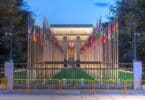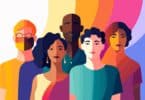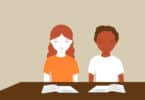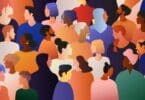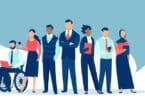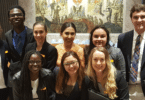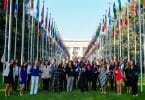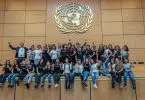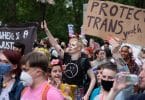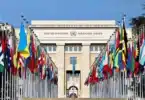This year, Amnesty International releases a book written in partnership with Angelina Jolie and Geraldine Van Bueren. Titled Know Your Rights (And Claim Them), this book describes the history of children’s rights and what rights children are entitled to. It also explores the child activists who make a difference in the world and includes a guide on how children can claim their rights through campaigning, education, and protesting. With endorsements by Malala Yousafzai and Greta Thunberg, this book aimed at kids 13-years and older is a great introduction to human rights. What can you expect from the guide?
A brief history of children’s rights
The concept of children’s rights is fairly new. For years, many cultures viewed children as property. As an example, under English common law until the late 1800s, fathers “owned” their children and their wives. In the 16th and 17th centuries, American colonists continued this tradition. Because children were property, they didn’t receive many rights. Governments looked away when children were abused, neglected, or exploited. This exploitation came to a head in the early 20th century with the rise of industrialization. Children worked the same hours and in the same dangerous conditions as adults but for less pay.
Educational reformers were involved in the movement for children’s rights. They argued that children needed a primary school education if the nation was going to prosper. This meant children shouldn’t work as if they were adults. In 1904, the National Child Labor Committee organized to raise awareness of child exploitation. In 1924, The League of Nations adopted the Geneva Declaration on the Rights of the Child. In 1946, the United Nations General Assembly established UNICEF, and just two years later, passed the Universal Declaration of Human Rights, which stated that mothers and children were owed “special care and assistance.” Other treaties and documents followed and in 1989, the UN adopted the Convention on the Rights of the Child, which recognizes children as social, economic, political, civil, and cultural actors.
What rights do children have?
The Convention on the Rights of the Child serves a few important purposes. First, it recognizes children as full human beings who deserve fundamental human rights. These rights apply regardless of a child’s “race, color, sex, language, religion, political or other opinion, national, ethnic or social origin, property, disability, birth or other status.” The CRC contains 54 articles laying out the rights that governments and other actors must promote and protect. There are four main categories:
Subsistence (or survival) rights
Survival rights include the basics, like the right to food, healthcare, and shelter.
Development rights
These rights ensure children receive the opportunities and resources they need to succeed. This includes the right to education, freedom of thought, and the right to leisure.
Protection rights
Children must be protected from neglect, abuse, and exploitation. That includes protection from neglect, sexual abuse, and unsafe work conditions.
Participation rights
Children have the right to participate in political life and within their community. They are free to join groups, assemble peacefully, and participate in social activities.
How children’s rights are threatened: why books like Know Your Rights matter
Why should a child read Know Your Rights? There are many threats to children’s safety and security. Common violations of rights include poverty, violence, and discrimination against children based on their gender, migrant status, disabilities, and more. While most governments claim to support children’s rights, there are still major issues.
These issues include violence and armed conflict. Children are uniquely affected when their parents are killed or they’re separated from their families. Numbers are hard to track, but according to UNICEF, there were more than 93,000 children recruited between 2005 and 2020. This is the verified number, but experts believe true numbers are much higher. Child soldiers are killed in high numbers because of their lack of training, inexperience, and use for the most dangerous missions.
The COVID-19 pandemic has also significantly threatened children’s rights. According to 2021 data from UNICEF, progress in every key measure of childhood (which includes education, economic status, and health) went backward. Schools for more than 168 million children closed for almost a year. Only 1 in 3 were able to access remote learning. The social disruption caused by the pandemic also creates fuel for more child marriages, abuse, and labor exploitation. Many children also lost their guardians to the disease, making them even more vulnerable as orphans.
Know Your Rights: about the authors
Amnesty International is an NGO headquartered in the United Kingdom. Initially began as an organization for political prisoners, it has since expanded its mission in defending human rights. It is the third-oldest international human rights organization.
Angelina Jolie is an actress, filmmaker, and humanitarian. She’s worked as a Special Envoy for the United Nations High Commissioner for Refugees.
Geraldine Van Bueren is a professor and a barrister. She’s a member of Doughty Street Chambers.

